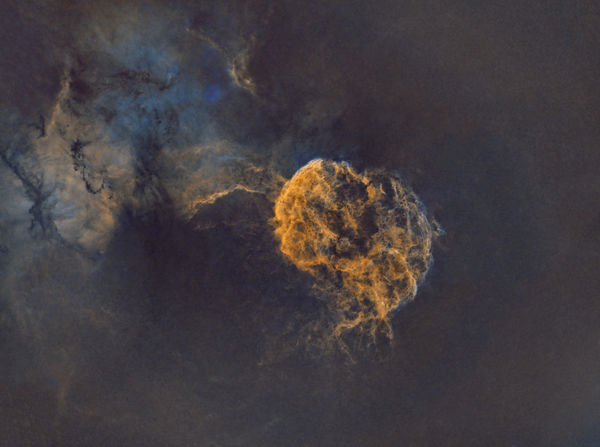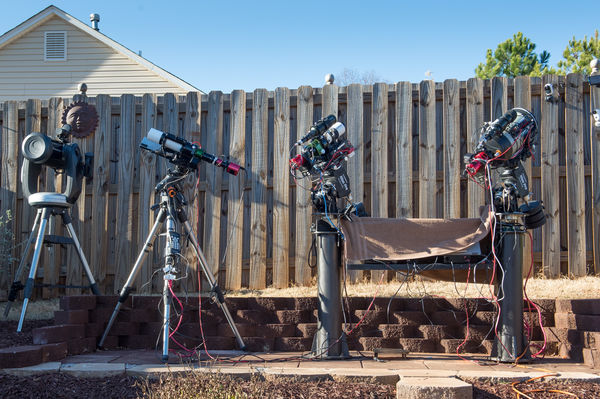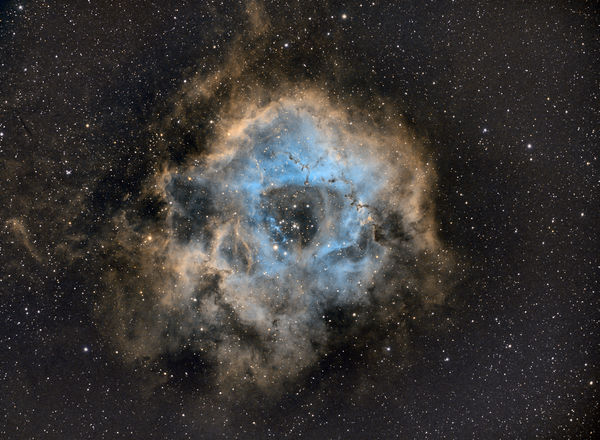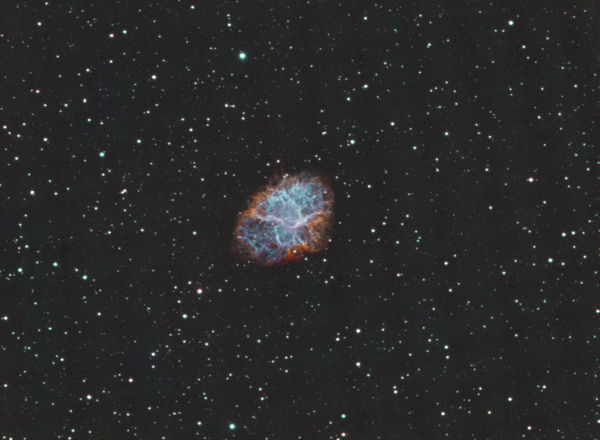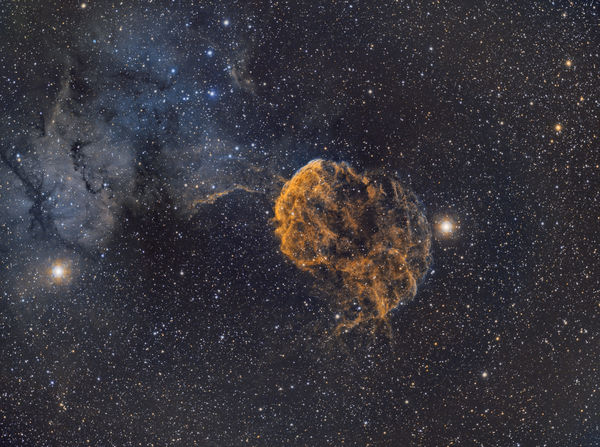Posts for: nikonshooter
Feb 17, 2020 21:00:59 #
JimH123 wrote:
Take a look at this site. About half way down you will find a coma + astigmatism example.
https://www.handprint.com/ASTRO/ae4.html
https://www.handprint.com/ASTRO/ae4.html
Good read Jim! Every star is a gull in my FOV...not just the corners where coma does its worse.
Hopefully when I boot up the kit this Friday or Saturday things will be ok. If not - back to the drawing board. I will re attempt to collimate without the reducer.
I appreciate you input and article!
Feb 17, 2020 20:46:09 #
Yes! Collimating did eliminate the Gulls on the Artificial Star visually. But the long exposures will surely bring them out if they are still present and were I a betting man....I would say they will be there.
Regarding an artificial star....you can make your own with a flashlight , aluminum foil and the smallest sewing needle you can get.........there is a 25.00 dollar one at Hubble Optics similar to the one I made. I also ordered one of these. http://www.hubbleoptics.com/artificial-stars.html#_
Regarding an artificial star....you can make your own with a flashlight , aluminum foil and the smallest sewing needle you can get.........there is a 25.00 dollar one at Hubble Optics similar to the one I made. I also ordered one of these. http://www.hubbleoptics.com/artificial-stars.html#_
Feb 17, 2020 19:16:00 #
I did get good to very good collimation on an artificial star. I defocused 6 wavelengths in ....then traveled through focus to 6 wavelength out. I didn't see any seagulls visually during the entire travel time...but cloudy skies tonight will prevent me from testing on a real star until this weekend. I will not know if I still have issues until then. At least I will not have to fiddle on collimation when the skies do clear.
I will update this when I have new info to let you know if the problem is solved!
I will update this when I have new info to let you know if the problem is solved!
Feb 17, 2020 17:04:15 #
Ballard wrote:
Hi Nikonshooter br Whenever you remove the correc... (show quote)
Yessir......I will be using an artificial star tonight as clouds are about to cover us in overcast and then more rain for three days. Friday and Saturday seem to be looking good! I hope to get things sorted out tonight so I do not have to waste clear sky nights fiddling with this. But then contrary to what my wife says, I don't always get my way!
Thanks for your input....I am hoping a nearly perfect collimation will remove these star shapes.
Feb 17, 2020 12:05:36 #
Europa wrote:
My RASA had bad seagulls, i didn’t have ones like those few really bright ones. I couldn’t get the collimation exactly right, but I did get the seagulls to mostly go away. (Celestron fixed it completely).
Something to note, after Celestron repair, I then notice an issue with tilt from my ASI1600, so if you are seeing things a bit different, in different corners, it could be that too.
Something to note, after Celestron repair, I then notice an issue with tilt from my ASI1600, so if you are seeing things a bit different, in different corners, it could be that too.
I will get a more precise collimation ... Changing the screws out for Bob’s knobs sure points to a collimating error being the root of the problem
Feb 17, 2020 10:23:22 #
Yessir......I plan to start the process of elimination. Of course I removed the camera/filterwheel and added a 8 power televue eyepiece on a diagonal to do the collimation. I have removed the secondary mirror to double check it......the primary looks fine from the secondary end. But the reducer is still on.
Thank you for helping me to dig into the possibilities!
Thank you for helping me to dig into the possibilities!
Feb 17, 2020 09:49:46 #
I guess! I will get collimated and see if they disappear but ...I would not be surprised if they are still there.
Feb 17, 2020 07:28:30 #
All of the stars in the field of view look like angels/seaguls! Mirrors are clean - took the secondary out and check it. Put it back in and collimated to a close but still way off collimation and it started to drizzle - plus being cold I decided to shut things down and pick up where I left off on a better night. Stars are as in focus and I can get ....as you focus through the seagull there is never a point where they take on a normal shape.
My guess is collimation. I will see if I can isolate the problem on a clear sky night using an eyepiece - remove as much of the optical train as possible....and get a closer collimation.
Crazy stuff happens in this hobby - thanks for you thoughts!
My guess is collimation. I will see if I can isolate the problem on a clear sky night using an eyepiece - remove as much of the optical train as possible....and get a closer collimation.
Crazy stuff happens in this hobby - thanks for you thoughts!
Feb 16, 2020 20:56:33 #
Does anyone have an idea what could be causing stars like this.
Gear Used
SCT Celestron EDGE 8HD, .70 Celestron Edge Reducer, ASI1600PRO-Mono Camera, Astronomik filters on ZWO 7 position filter wheel, Moonlite Auto Focuser.
BTW, this is not my picture.....I got it off the Jerry Lodriguss website but it closely represents stars that I was seeing when doing "Frame and Focus" in Sequence Generator Pro.
Gear Used
SCT Celestron EDGE 8HD, .70 Celestron Edge Reducer, ASI1600PRO-Mono Camera, Astronomik filters on ZWO 7 position filter wheel, Moonlite Auto Focuser.
BTW, this is not my picture.....I got it off the Jerry Lodriguss website but it closely represents stars that I was seeing when doing "Frame and Focus" in Sequence Generator Pro.
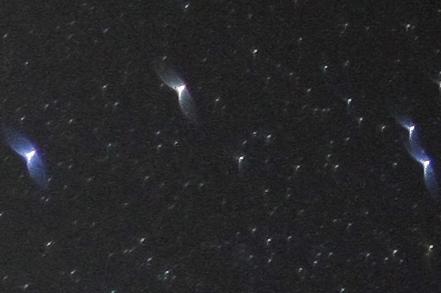
Feb 12, 2020 19:48:01 #
WHOA! Now your talking! Unfortunately, I guess you know you are in for 30 straight cloudy nights....it comes with every new mount! Congratulations on your new arrival!
Feb 8, 2020 15:08:47 #
btrlvngthruchem wrote:
They're all good but the Jellyfish is exceptional. Super nice work. I'm blown away by your "poor-man's observatory" and also so envious. I'd really like to know if you take everything down after an imaging session and if not, what do you do to protect everything?
Thanks,
Jay
Thanks,
Jay
My gear stays up year around. I use Telegizmos to cover the kits. They are well made - water repellent - help in the heat of the summer to reduce the temps - and durable. I have one for each kit. They just weathered 7 inches of rain over a 12 hour period - high winds - E1 Tornado on Thursday that spared our home but hit others close by.....but the winds at our home were crazy! I pulled the covers off yesterday and all was dry! It's snowing now and they will protect my gear as good as if they were inside.
http://www.telegizmos.com/
Feb 8, 2020 14:28:34 #
Narrowband imaging uses filters Ha, SII, and OIII (there are others but this constitutes the most used by astro imagers). Many nebula are photographed using the Hubble Palette. When doing this you use a mono camera and you substitute the SII filtered images for the RED channel, Ha for the GREEN, and OIII for the BLUE. The Hubble telescope was optimised for signal and contrast and this array of filters does a decent to outstanding job of rendering that contrast. Ha equates to the bandwidth passthrough filter for hydrogen gas emission, SII for sulfur and OIII for oxygen.
RGB = SHO
RGB = SHO
Feb 8, 2020 09:45:03 #
tony85629 wrote:
Very nice work. Particularly liked your Jellyfish. Did you use Ha, OIII and OII?
No.....I stayed with SHO but ended up trying some funking things in Pixinsight to bring more contrast to what was otherwise a pretty flat/dull data set.
I know the stars are pitiful in this image.....my original sequence included 5 second RBG images as I had planned to replace the stars but clouds moved in and the sequence was aborted before I could gather those. I processed anyway and went wild in post doing some "not so conventional things"!
I revisit this target every year - may even return to it this year if only STEPPING BEYOND would stop praying for rain every week:) He lives up the road from me!
For the record - rain and tornados have been so bad we have had our power off, from Thursday until this morning, Saturday. ....and the scopes were all left outside during 7 inches of rain and winds that took down trees, blew off roofs, moved tractor trailers from the interstate to nearby parking lots - exciting. But the 360 Telegizmos kept everything DRY! I keep one on each of the 4 outside kits year around! More rain is coming this afternoon...there is a 12 hour break and then another week of rain!
Below is the starless version that just needs the RGB stars ...this version was also finished off in PSCC.
Jan 29, 2020 15:30:58 #
Ballard wrote:
Really nice work. I noticed that open cluster NGC 2252 just to the left of the Rosette nebula came out well also. In the upper right hand corner of the image of IC443 there appears to be a small blue planetary nebula, do you know what it is? I couldn't find it in my charts.
I do not have a clue!
Jan 29, 2020 08:01:28 #
Stepping Beyond and I have had our share of rain, clouds, and more rain. Last week we had three consecutive nights of good to great skies. I used three kits at the same time and took advantage of the clear nights the best way I knew how.
Two images took two nights of total exposure time - the Rosette was taken in one night.
All three images were taken with ASI1600MM-C Pro cooled cameras on either an Edge800 SCT or Stellarvue 70T. I was able to get an average of 7 hours of exposure time for all three images ....I used 180 second exposures on the SV70T and 300 seconds on the SCT. Gains and offsets varied with each filter but a 1200 ADU mean was my goal for each filter. I used Astronomik 6nm NB filters for both kits. .....I also setup a Alt Az SCT scope to do some visual while the imaging was going on. I almost had forgotten how much fun it was to do visual astronomy.
I used Sequence Generator Pro to control this mess and PixInsight to fix the mess.
The Rosette, NGC2238; IC443, Jellyfish nebula; and M1, crab nebula.
I also attached the gear used - btw, I had to expand the platform and move one pier (too close and poor planning initially) The kit on tripod with the Vixen scope and AVX mount is equipped for solar imaging....when time allows I have had a few hours of daytime solar imaging.
Two images took two nights of total exposure time - the Rosette was taken in one night.
All three images were taken with ASI1600MM-C Pro cooled cameras on either an Edge800 SCT or Stellarvue 70T. I was able to get an average of 7 hours of exposure time for all three images ....I used 180 second exposures on the SV70T and 300 seconds on the SCT. Gains and offsets varied with each filter but a 1200 ADU mean was my goal for each filter. I used Astronomik 6nm NB filters for both kits. .....I also setup a Alt Az SCT scope to do some visual while the imaging was going on. I almost had forgotten how much fun it was to do visual astronomy.
I used Sequence Generator Pro to control this mess and PixInsight to fix the mess.
The Rosette, NGC2238; IC443, Jellyfish nebula; and M1, crab nebula.
I also attached the gear used - btw, I had to expand the platform and move one pier (too close and poor planning initially) The kit on tripod with the Vixen scope and AVX mount is equipped for solar imaging....when time allows I have had a few hours of daytime solar imaging.
